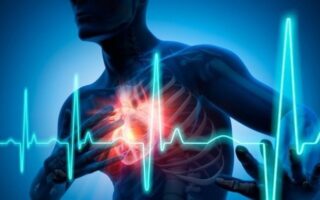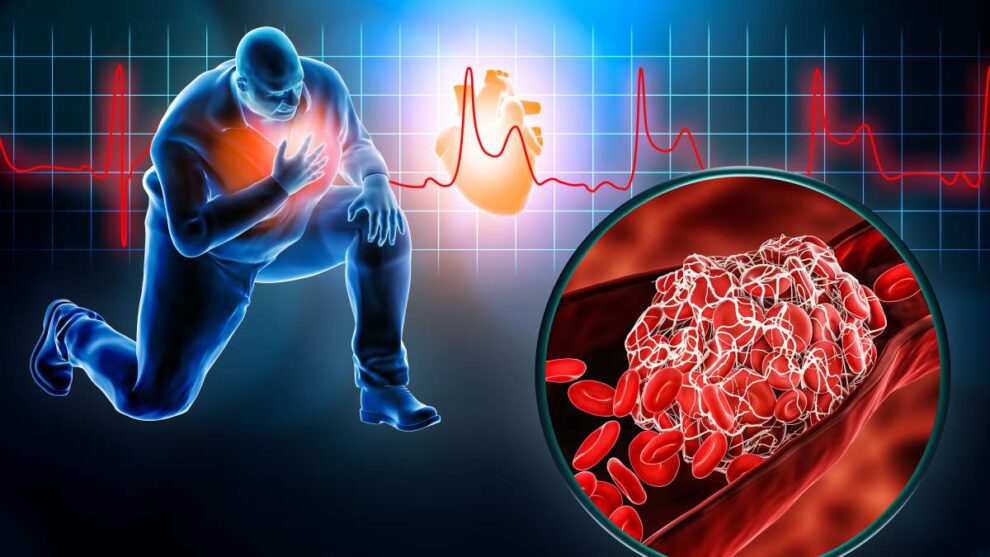Cardiac Arrest: Causes, Symptoms, Treatment, and Prevention
Cardiac arrest is a life-threatening medical emergency characterized by the sudden cessation of the heart’s pumping action, resulting in the absence of blood flow to vital organs. During cardiac arrest, the heart’s electrical system malfunctions, leading to the heart’s inability to contract and pump blood effectively. This condition leads to the immediate loss of consciousness, absence of pulse, and cessation of breathing. Without prompt intervention, such as cardiopulmonary resuscitation (CPR) and defibrillation, the lack of oxygen supply to the brain and other organs can cause irreversible damage within minutes, making immediate medical attention crucial for potential survival and recovery.
 Causes and Mechanisms: Cardiac arrest typically results from a malfunction in the heart’s electrical system, disrupting the normal rhythm (arrhythmia). Ventricular fibrillation and ventricular tachycardia are the most common arrhythmias associated with cardiac arrest. Other causes include heart attacks, severe electrolyte imbalances, drug overdoses, trauma, drowning, and certain genetic conditions.
Causes and Mechanisms: Cardiac arrest typically results from a malfunction in the heart’s electrical system, disrupting the normal rhythm (arrhythmia). Ventricular fibrillation and ventricular tachycardia are the most common arrhythmias associated with cardiac arrest. Other causes include heart attacks, severe electrolyte imbalances, drug overdoses, trauma, drowning, and certain genetic conditions.
Symptoms: A cardiac arrest system is an integrated medical emergency response designed to rapidly identify and treat cardiac arrest, a life-threatening condition where the heart stops beating. It comprises automated external defibrillators (AEDs), CPR training, and emergency communication protocols. When a person experiences cardiac arrest, the system immediately dispatches trained responders, alerts nearby medical facilities, and guides bystanders in performing CPR and using AEDs. The system’s swift response significantly improves survival rates by restoring the heart’s rhythm. It emphasizes public awareness, early recognition, and prompt action, providing a vital link between the occurrence of cardiac arrest and the delivery of life-saving interventions.
Risk Factors: Several factors increase the risk of experiencing cardiac arrest. These include:
- Age: Risk increases with age, especially for individuals over 45.
- History of heart disease: Those with a previous heart attack, heart failure, or arrhythmias are at higher risk.
- Family history: A family history of cardiac issues can raise the risk.
- High blood pressure and cholesterol levels: These conditions strain the heart.
- Smoking: Tobacco use damages blood vessels and the heart.
- Obesity: Excess weight puts additional stress on the heart.
- Sedentary lifestyle: Lack of regular physical activity affects heart health.
- Drug and alcohol abuse: Substance abuse can lead to cardiac problems.
- Diabetes: Poorly managed diabetes increases the risk.
- Stress and mental health: Chronic stress and certain psychological conditions can contribute.
Treatment: Cardiac arrest requires immediate action to improve the chances of survival:
- Call for emergency medical help: Dial emergency services (e.g., 911) immediately.
- Cardiopulmonary Resuscitation (CPR): Begin CPR with chest compressions and rescue breaths to maintain blood circulation and oxygenation until professional help arrives.
- Defibrillation: An automated external defibrillator (AED) or a manual defibrillator is used to deliver an electric shock to restore the heart’s normal rhythm.
- Advanced cardiac life support (ACLS): Healthcare professionals administer advanced interventions, medications, and life-saving measures.
- Post-cardiac arrest care: If the patient regains a pulse, they are closely monitored and treated in the hospital’s intensive care unit.
Prevention: While not all cases of cardiac arrest can be prevented, certain lifestyle changes can reduce the risk:
- Regular exercise: Engage in moderate physical activity most days of the week.
- Healthy diet: Eat a balanced diet rich in fruits, vegetables, whole grains, and lean proteins.
- Avoid smoking and excessive alcohol consumption.
- Control blood pressure and cholesterol levels through medication and lifestyle modifications.
- Manage stress and seek support for mental health issues.
- Learn CPR: Being trained in CPR can save lives during emergencies.
Conclusion: Cardiac arrest is a life-threatening condition requiring immediate action for survival. Understanding its causes, symptoms, risk factors, and treatment options can help individuals recognize the signs and seek prompt medical assistance. By adopting a healthy lifestyle and being prepared to respond in emergencies, we can work towards reducing the incidence and improving the outcomes of cardiac arrest.










Add Comment